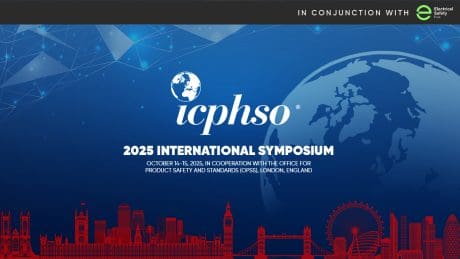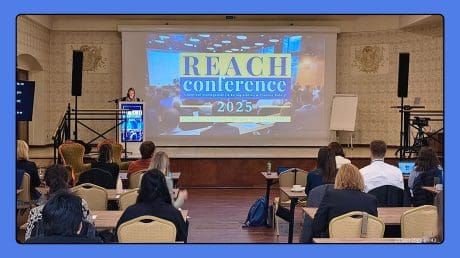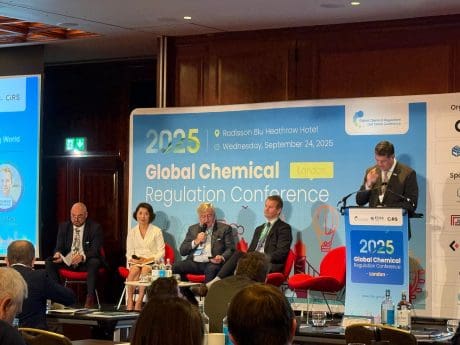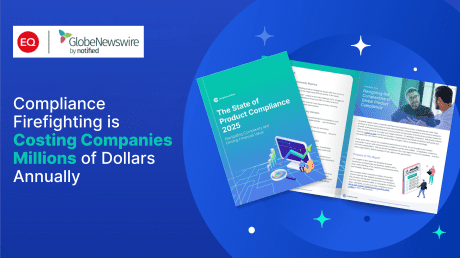
Highlights from ICPHSO 2025 North America Safety Training Workshop
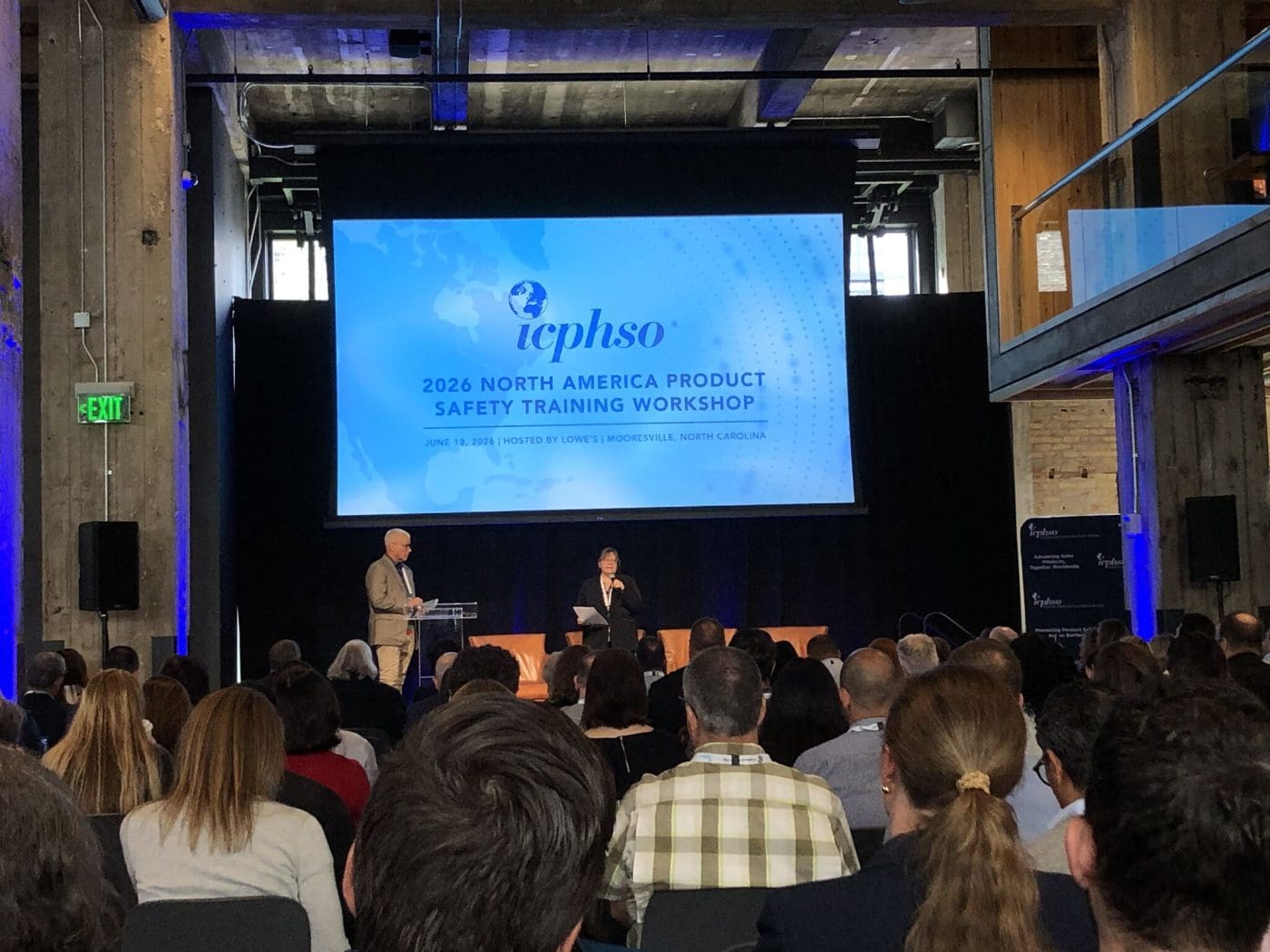
This blog was originally posted on 25th June, 2025. Further regulatory developments may have occurred after publication. To keep up-to-date with the latest compliance news, sign up to our newsletter.
AUTHORED BY CASSIE PERSHYN, SENIOR REGULATORY CONTENT SPECIALIST, CORINE LAURIJSEN, SENIOR REGULATORY COMPLIANCE SPECIALIST, AND KIMBERLY PLASSCHE, SENIOR REGULATORY CONTENT SPECIALIST, COMPLIANCE & RISKS
We recently had the opportunity to attend the ICPHSO (International Consumer Products Safety Organization) 2025 North America Safety Training Workshop, held June 17, 2025, hosted by Target in Minneapolis. The event offered valuable insight into updates to product safety policies and regulations, all of which significantly impact product manufacturers and stakeholders.
In this blog, we share a concise overview of the key discussions from the workshop, focusing on US CPSC and Health Canada, US States, product safety in real time, brand protection, AI and automation, and packaging EPR.
What Are the Latest Regulatory Updates on Health Canada & CPSC Activities in North America?
ICPHSO attendees arrive at the annual gatherings expecting to hear behind-the-scenes news from major regulators in North America, but this year’s training conference lacked this insider view. Representatives from Health Canada and the US Consumer Product Safety Commission (CPSC) were scheduled to attend, but were unable to travel to Minneapolis for the event.
In their place, Michael Gentine, Counsel at Arnold & Porter, provided a view of what is happening at the federal level in the US , while Lindsay Lorimer, Partner at McMillan, gave us some insight into the general current and future activities of Health Canada.
- As most know, administrative changes at the CPSC have been challenged and Commissioners are reinstated to the positions, but changes are happening rapidly with the Commission.
- The current Chairperson of the CPSC has a demonstrated history of being enforcement-minded, so manufacturers and retailers can expect to see more of an emphasis on quick decisions.
- Future rulemakings for products regulated under the Canada Consumer Product Safety Act are likely to increase, including for lithium ion batteries.
- Amendments to toxics levels for products such as finger paints are still expected, following the June 2023 proposal on the topic.
What’s Happening in the States?
The US states, as always, have been busy up to this mid-year conference. As many states finish their 2025 sessions, this panel was valuable to attendees tracking newly enacted bills and upcoming deadlines.
Moderated by Michelle Reinen from Trade and Consumer Protection, Wisconsin DATCP, the presenters shared perspectives from the key states of California, Maine, Minnesota, New York, Pennsylvania and Washington.
- Kerri Malinowski Farris from the Maine Department of Environmental Protection discussed Maine’s PFAS in Products Law. She noted that the law, established in 2021 and modified in 2024, creates a 3-year cycle of product category sales prohibitions leading to a broad market impact prohibition in 2032, with exemptions. The law also provides manufacturers with an option for a “Currently Unavoidable Use” (CUU) process and requires reporting from manufacturers who intentionally add PFAS to prohibited products with a CUU designation.
- Megan Saley, PFAS Product Compliance from the Minnesota Pollution Control Agency, highlighted that Minnesota’s Amara’s Law prohibits the sale of products containing PFAS within 11 categories as of January 1, 2025, including carpets and rugs, children’s products, cleaning products, cookware, cosmetics, dental floss, fabric treatments, menstruation products, textile furnishings, ski wax, and upholstered furniture.
- Anne Marie Ellis, Shareholder at Buchalter, discussed various regulations in the remaining states. Reminders were given regarding state deadlines including New York’s ECL Section 37-0121 prohibiting new apparel containing intentionally added PFAS as of January 1, 2025 and California’s AB 1817 ban of PFAS in apparel and textiles, measured in 100ppm Total Organic Fluorine, also effective January 2025.
Interested in understanding the latest PFAS rules in the US and beyond? Our upcoming Chemicals Quarterly webinar will provide an overview of the latest news on permitted, restricted and prohibited substances in a variety of products from around the world.
When Interests Collide: Navigating Product Safety in Real-Time
This session was moderated by Lazaro Aguiar, Associate Attorney at Husch Blackwell. Speakers were Michael Del Negro, Vice President, Head of Safety, Ethics & Compliance at Peloton, Stacey Bowers, Global Product Compliance Manager at Enhesa, and Teresa Murray, Consumer Watchdog Director at US Public Interest Research Group (PIRG). They discussed regulatory changes in the US and best compliance practices.
- Up to June 17, 2025, President Trump signed 163 Executive Orders, and recent changes point to deregulation on federal level, incl. Executive Order 14192 Unleashing Prosperity Through Deregulation (10-for-1 Rule), independent agency leadership changes (incl. CPSC), and deregulation of oil.
- Regulation at state level as a response to deregulation on federal level causes a patchwork of regulations as states work independently.
- Product compliance best practices to weather any storm:
– always prioritize consumer safety (safe products first);
– compliance is a long-term strategy (base it on the strictest rules);
– enforcement trends and regulatory approaches are like a pendulum, expected to change again after the next election, so don’t relax! - It is better to design out dangers than to add warnings, and different demographics and generations need to be taken into account for designing a safe product.
- Product Liability and State of the Art Defense is rooted in the principle that a manufacturer must exercise reasonable care to design a product that does not create an unreasonable risk of harm when used as intended or in a reasonably foreseeable manner. This includes keeping informed of current scientific knowledge and discoveries in the field.
Brand Protection: Threats and Defenses
This panel with moderator Chris Harvey, SVP, Client Services at Sedgwick, and speakers Debra Hyde, Manager Product Safety at Lowe’s, Rob Ford, EVP, Managing Partner at 5W Public Relations, John Kuppens, Partner at Nelson Mullins Riley & Scarborough LLP, and Chris Goller Senior Manager, Client Services & Global Programs at QIMA, discussed several scenarios related to product recalls. General points were:
- Number of recalls are up.
- Product related complaints pop up on social media. Be proactive and, if applicable, debunk accusations with your own well recorded product information.
- Recall when needed. Not doing what you should be doing is a bad bet.
- The best option for a recall is often a refund instead of a replacement, as you never know how fast a product or product part can be replaced.
How Are AI and Automation Shaping the New Era of Safety and Compliance Management?
This panel discussed how AI and machine learning are transforming product safety, shifting from reactive responses to proactive risk identification. Speakers Eli Clemens, Policy Analyst with the Center for Data Innovation, Ashita Kapoor, Associate Director of Product Safety with Consumer Reports, and Brian Grochal, Director of Safety and Quality at Bark, highlighted how AI tools like predictive modeling, advanced pattern recognition, and social media surveillance help detect hazards early.
- A key focus was on natural language processing (NLP) and its growing role in monitoring unstructured consumer feedback across digital platforms. From identifying “smoke words” and classifying sentiment to differentiate usability issues from safety threats. These AI capabilities, combined with automation tools, allow even non-technical teams to streamline incident classification, regulatory flagging, and internal reporting.
- The session also addressed the evolving regulatory landscape, particularly the U.S. CPSC’s challenge in keeping pace with rapid technological advancements. Panelists noted that current frameworks may be insufficient given new risks from online marketplaces and global supply chains. They emphasized that AI offers an opportunity to enhance the CPSC’s capabilities through proactive monitoring, faster response times, and data-driven enforcement.
- Finally, the discussion covered organizational design in AI-driven environments, with companies increasingly using AI to augment employees and automate tasks. The rise of no-code automation platforms empowers safety teams to scale AI across workflows. Panelists concluded that document summarization, complaint analysis, and early risk detection are ideal starting points for AI adoption.
How Is Packaging EPR Evolving, and What Can We Learn for the Future?
The last session offered valuable insights into the evolving landscape of Extended Producer Responsibility (EPR) for packaging across various U.S. states. It underscored the value of best practices and collaboration in navigating this rapidly shifting regulatory environment.
- Legal expert Will Troutman, a Partner at Norton Rose Fulbright US LLP, moderated this panel and addressed key enforcement and compliance considerations, while industry perspectives given by Ryan McCoy, Director of Packaging at Target Corporation and Nicki McClung, Account Manager with the Circular Action Alliance emphasized the importance of responsible material choices and the role of EPR in building business resilience.
- Mallory Anderson from the Minnesota Pollution Control Agency provided an update on Minnesota’s developing EPR framework, highlighting the state’s focus on stakeholder engagement and long-term sustainability goals.
- Panelists also discussed early lessons from Oregon’s reporting processes, shedding light on practical challenges and areas for improvement as well as Colorado’s emerging EPR system introducing a fresh set of complexities, particularly around data accuracy and producer obligations.
Want to learn more about Packaging EPR in the United States? In February 2025 our colleague Ruan Doherty wrote an in-depth blog providing an overview of the current EPR landscape in the US and key programmatic and regulatory developments for 2025.
Conclusion
Attending the ICPHSO workshop gave us a comprehensive view of where the industry is heading. From deregulation and uncertainty on US federal level and patchwork legislation in the states, to increase in recalls and fast development of AI, it’s clear that staying ahead of these developments is essential.
Staying informed and proactive in implementing these changes will be vital for maintaining compliance and ensuring market access – and we hope this recap offers some clarity navigating these challenges.
Stay Ahead Of Regulatory Change in Product Safety Policies and Regulations
Want to stay ahead of regulatory developments in product safety policies and regulations?
Accelerate your ability to achieve, maintain & expand market access for all products in global markets with C2P – your key to unlocking market access, trusted by more than 300 of the world’s leading brands.
C2P is an enterprise SaaS platform providing everything you need in one place to achieve your business objectives by proving compliance in over 195 countries.
C2P is purpose-built to be tailored to your specific needs with comprehensive capabilities that enable enterprise-wide management of regulations, standards, requirements and evidence.
Add-on packages help accelerate market access through use-case-specific solutions, global regulatory content, a global team of subject matter experts and professional services.
- Accelerate time-to-market for products
- Reduce non-compliance risks that impact your ability to meet business goals and cause reputational damage
- Enable business continuity by digitizing your compliance process and building corporate memory
- Improve efficiency and enable your team to focus on business critical initiatives rather than manual tasks
- Save time with access to Compliance & Risks’ extensive Knowledge Partner network
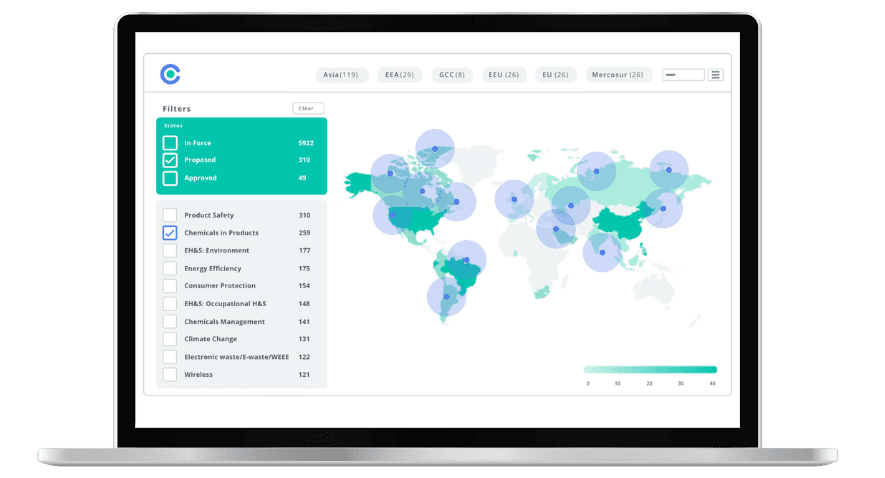
Chemicals Quarterly – Q2 2025 Regulatory Update
Your Q2 2025 update on key regulatory changes affecting chemicals in products worldwide.


